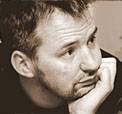Strategy involves change. People have to change something to bring strategy to life. You need to be able to translate your strategy into actions, tasks and projects. You also need to communicate the purpose, logic and purpose of the strategy so that people get engaged with the work and are willing to help it succeed. If strategy is painful then you're doing it all wrong.
McDonald's was known for being unhealthy, dirty, inconvenient, cheap, unethical and old-fashioned. In response, the new CEO introduced a new strategy: 'Plan to Win'. It fit onto only one page. It explained very clearly the necessary changes so everyone understood what was required. The mission changed from 'best fast food restaurant' to 'favourite place and way to eat'.
This clear change of strategy led to clear changes. Instead of growing locations they improved experience. They introduced healthier food, good tasting coffee, interiors that surpassed coffee shop competitors and free Wi-Fi.
Suddenly competitors were struggling to catch up. The strategy delivered 8 years of growth. McDonalds succeeded because everyone engaged with a clear strategy that made sense and motivated action.
Strategy involves change because it has to adapt to competitors, technology and customers. If you change the strategy but don't succeed in changing the company, then the strategy is wasted. Even worse, the company may not succeed in adapting in ways that allow it to grow and thrive.
The McDonalds example shows the importance of clarity in getting strategic changes made. The changes are made by people. People can only help if they know what is expected. And they will only help if they feel engaged with the direction of the strategy.
The strategy may be correct but so boring that no-one wants to read it. It may include new ideas but ideas that are not credible. It may be so complex that it takes longer to read it than do anything about it. And it may be so vague that no-one knows what is expected of them if they do want to help. The Strategy Book is full of questions and advice about how to make your strategy enjoyable and fulfilling.
According to McKinsey, fewer than 25% of executives use the strategic planning process to drive decision making, and only 14% believe it involves the talent of employees so it's worth thinking about making strategy engaging before there even is a strategy in place.
So you could create your strategy in secret and spend months trying to make it work. But it's far better to spend months involving everyone in creating a strategy that encourages discussions between departments, improves understanding of competition and customers, and increases chances of creating something unique, something that will help you to grow.
It's also important to consider the scale and nature of the change that your strategy requires. Changes might be big or small. They may involve evolution or revolution. They may be positive or negative. They may involve losing jobs or gaining jobs. The strategy might require new skills or actions. It might involve different areas of the business in different ways. It may be more externally or more internally focused.
Change comes from different perspectives. Responses to changes come from different perspectives. And changes aren't going to be welcome in the same way. These tensions are what creates the attempt to make changes in the first place and what will shape what eventually happens.
There may be clashes between different interest groups, or disagreements about competing plans for the future. There may be an absence of clarity about what needs to be done so that nothing clear is done. There are often winners and losers who both feel very differently about the strategy.
There are two key challenges: How to reduce wasted effort arguing about what change should be made or not made? And how to make sure that the right action is taken to make the change happen successful?
Fortunately, the best solution works for both challenges. First, make strategy clear and easy to understand for everyone. Clarity is next to effectiveness. Clarity helps people know how to contribute positively to the strategy. It also increases the chances that people will want to contribute. Second, include people in creating and making it work. Take them through the logic behind the strategy so that your strategy comes to life.
Your task is to intelligently respond to real desire for change (and improvement) that already exists. Work with the forces for change so that it becomes organic rather than mechanical. In this way, you are working with the people rather than against them. The friction involved is reduced. And the chances are higher than you will – at least – be attempting something that is desired and respected by people.
Discuss the logic behind the strategy over and over again. Listen actively to dissent, discontent and feedback – use it to improve the strategy and the actions that follow from it. Consider the scale and nature of the changes that the new strategy will bring.
What has to change? How big are the changes? Who will be affected? Who do you need to really make the strategy work? For a strategy to be valuable, it has to be made to work. Smart strategists understand that strategy only works if enough people want it to succeed. More is accomplished when the people doing the work love the strategy that guides the work.

as Rich Teerlink (former Harley Davidson CEO) said: 'people don't resist change, they resist being changed'